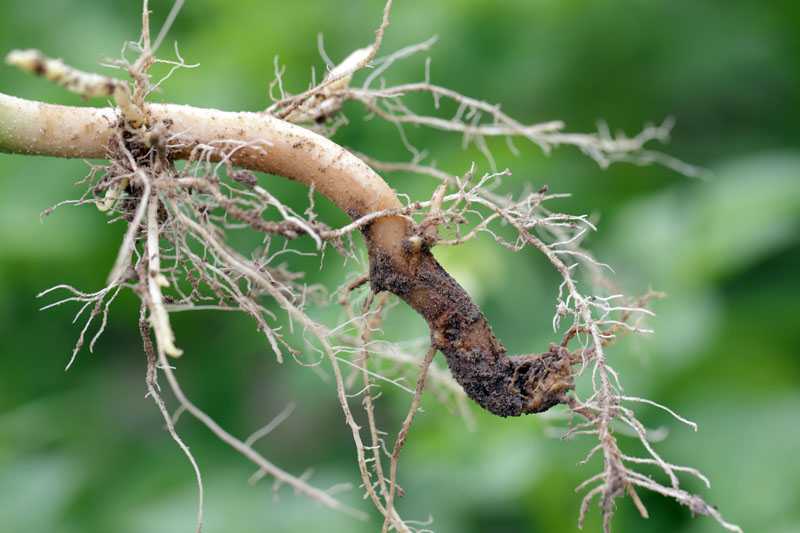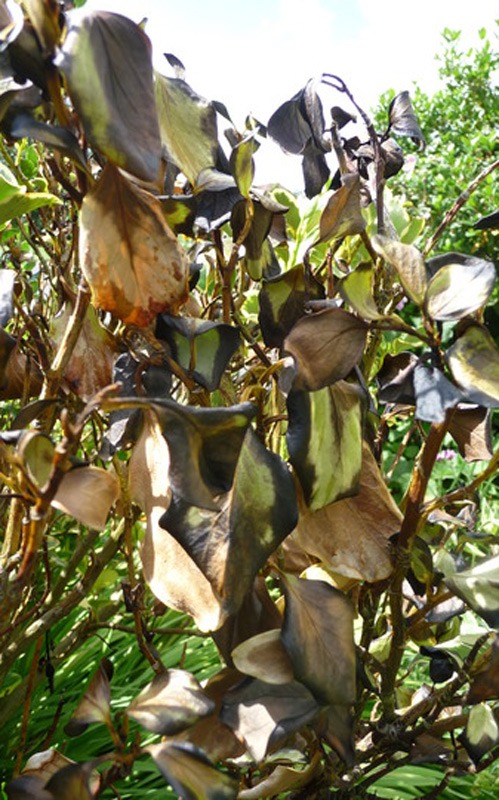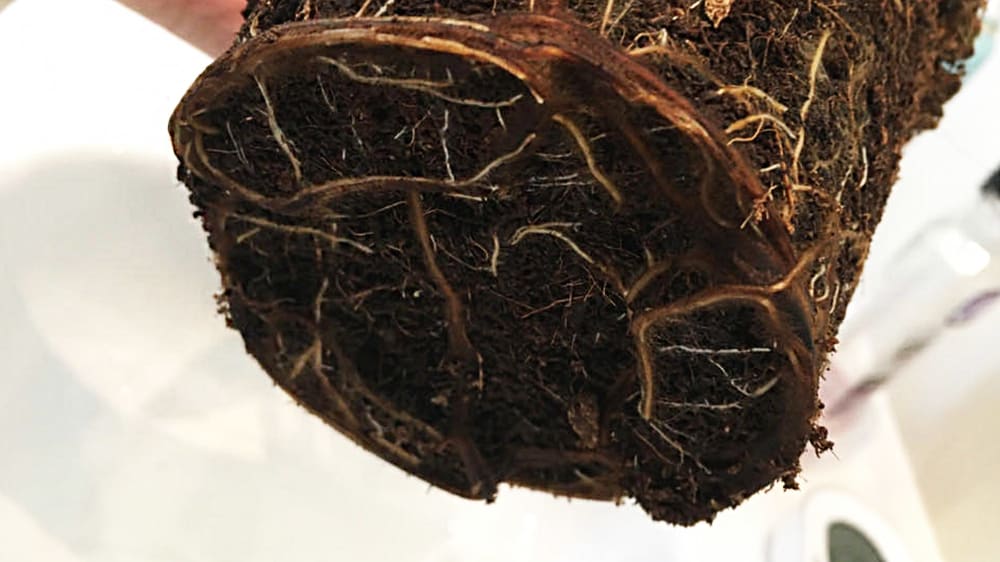As an Amazon Associate, I earn from qualifying purchases.
To fix root rot in outdoor plants naturally, improve soil drainage and apply organic fungicides. Remove affected roots and repot the plant.
Root rot is a common issue in outdoor plants, often caused by overwatering and poor soil drainage. Left untreated, it can lead to plant death. Natural remedies offer effective solutions without the need for harsh chemicals. Enhancing soil drainage is crucial, as waterlogged soil promotes fungal growth.
Organic fungicides help combat the infection, while removing the affected roots prevents further spread. These methods are eco-friendly and support plant health. By addressing root rot early, gardeners can revive their plants and ensure a thriving garden. Proper care and natural treatments make all the difference in maintaining healthy outdoor plants.

Credit: www.gardenia.net
Identifying Root Rot
Root rot is a common issue for outdoor plants. Identifying root rot early can save your plants. This section will help you recognize the signs and understand the causes.
Signs And Symptoms
Knowing the signs of root rot is crucial. Here are some key symptoms:
- Yellow Leaves: Leaves turn yellow and may fall off.
- Wilting: Plants wilt even when the soil is moist.
- Soft Roots: Roots feel mushy and look dark brown or black.
- Foul Smell: The soil or roots may have a bad odor.
Common Causes
Understanding the causes of root rot can help prevent it. Here are some common reasons:
| Cause | Description |
|---|---|
| Overwatering | Too much water suffocates the roots. |
| Poor Drainage | Waterlogged soil creates an ideal environment for fungi. |
| Compacted Soil | Compact soil restricts root growth and air flow. |
| Infected Soil | Soil with fungi can infect healthy roots. |
Choosing Resistant Plants
Fixing root rot naturally starts with choosing resistant plants. These plants can withstand harsh conditions. They are less likely to suffer from root rot. Choosing the right plants can save you time and effort.
Varieties To Consider
Some plants are naturally resistant to root rot. Here are a few varieties to consider:
- Marigolds: These flowers deter pests and diseases.
- Lavender: Known for its fragrant blooms and hardy roots.
- Thyme: A herb that thrives in well-drained soil.
- Yarrow: This plant tolerates poor soil conditions.
- Black-eyed Susan: Resistant to many soil-borne diseases.
Benefits Of Resistance
Choosing resistant plants offers many benefits:
- Less Maintenance: These plants need less care.
- Healthier Growth: Resistant plants grow strong and healthy.
- Fewer Chemicals: You won’t need many pesticides.
- Cost-Effective: Save money on plant replacements.
- Eco-Friendly: Reduce your environmental footprint.
| Plant Variety | Resistance Level | Additional Benefits |
|---|---|---|
| Marigolds | High | Deters pests |
| Lavender | High | Fragrant blooms |
| Thyme | Medium | Thrives in well-drained soil |
| Yarrow | Medium | Tolerates poor soil |
| Black-eyed Susan | High | Resistant to diseases |
Improving Soil Drainage
Fixing root rot in outdoor plants often involves improving soil drainage. Poor drainage can suffocate roots and lead to rot. Proper drainage allows roots to breathe and absorb nutrients effectively. Let’s explore the best ways to improve soil drainage naturally.
Techniques And Tools
Enhancing soil drainage can be achieved using various techniques and tools. Here are some effective methods:
- Adding Organic Matter: Mix compost or aged manure into the soil. This improves soil structure and drainage.
- Creating Raised Beds: Raised beds elevate plant roots, preventing waterlogging.
- Using Mulch: Mulch helps retain moisture and regulates soil temperature.
- Perforating the Soil: Use a garden fork to create holes for better water flow.
These techniques are simple and require basic garden tools.
Long-term Benefits
Improving soil drainage has multiple long-term benefits for your garden:
- Healthier Plants: Well-drained soil promotes healthier root systems.
- Reduced Root Rot: Proper drainage minimizes the risk of root rot.
- Enhanced Growth: Plants grow better in soil that drains well.
- Less Maintenance: Good drainage reduces the need for frequent interventions.
Long-term benefits lead to a more thriving garden.

Credit: www.planetnatural.com
Watering Practices
Proper watering practices can help fix root rot naturally in outdoor plants. Understanding the right way to water your plants is crucial. It ensures they stay healthy and free from root rot.
Optimal Frequency
Watering your plants too often can cause root rot. Follow these tips for optimal frequency:
- Check soil moisture before watering.
- Water only when the top inch of soil is dry.
- Use a moisture meter for accuracy.
Plants usually need watering once or twice a week. Adjust based on your climate and plant type.
Best Time To Water
Choosing the best time to water your plants helps prevent root rot. Watering at the right time also ensures your plants get the most benefit.
| Time | Reason |
|---|---|
| Early Morning | Allows water to soak in before heat evaporates it. |
| Late Afternoon | Gives plants time to absorb water before nightfall. |
Avoid watering during the hottest part of the day. It can cause water to evaporate too quickly.
Natural Treatments
Dealing with root rot in outdoor plants can be challenging. Using natural treatments ensures your plants stay healthy without harsh chemicals. Let’s explore some effective natural treatments for root rot.
Homemade Solutions
Homemade solutions are easy to make and safe for plants. Here are some tried and tested remedies:
- Cinnamon Powder: Sprinkle cinnamon powder on the affected roots. It has antifungal properties.
- Apple Cider Vinegar: Mix one tablespoon of apple cider vinegar with one gallon of water. Use this solution to water the plants. It helps in killing the fungus.
- Baking Soda: Combine one teaspoon of baking soda with two cups of water. Spray this mix on the roots. It helps in reducing fungal growth.
Organic Products
Organic products can also be very effective in treating root rot. They are readily available and easy to use:
| Product | Usage |
|---|---|
| Neem Oil | Mix with water and spray on the soil. It has strong antifungal properties. |
| Compost Tea | Apply compost tea directly to the soil. It introduces beneficial microbes. |
| Hydrogen Peroxide | Mix one part of hydrogen peroxide with four parts of water. Water the plants with this solution. It oxygenates the roots and kills pathogens. |
Using these natural treatments, you can effectively manage root rot. These solutions are simple and efficient, helping your plants thrive.
Enhancing Soil Health
Healthy soil is essential for preventing root rot in outdoor plants. Improving soil health naturally helps plants resist diseases. Focus on using natural methods to boost soil vitality.
Compost And Mulch
Using compost and mulch is a great way to improve soil health.
- Compost adds essential nutrients to the soil.
- Mulch helps retain moisture and reduce weed growth.
Spread a 2-3 inch layer of compost around your plants. Cover it with a layer of mulch to lock in nutrients and moisture.
| Material | Benefits |
|---|---|
| Compost | Enhances nutrient content and soil structure |
| Mulch | Reduces evaporation, controls weeds, and moderates soil temperature |
Beneficial Microorganisms
Introducing beneficial microorganisms to the soil can greatly enhance soil health.
- Add mycorrhizal fungi to improve nutrient absorption.
- Use biochar to increase microbial activity in the soil.
Beneficial microorganisms break down organic matter, making nutrients available to plants. They also protect plant roots from harmful pathogens.
Regularly adding compost and beneficial microorganisms will create a thriving soil ecosystem. This helps plants grow stronger and resist root rot naturally.
Pruning And Care
Proper pruning and care are essential steps to naturally fix root rot in outdoor plants. Pruning helps remove infected parts and promotes healthy growth. This section will guide you on when and how to prune your plants effectively.
When To Prune
Prune your plants as soon as you notice root rot. Early detection is key to preventing the spread of the disease. Check for signs of root rot regularly. These include yellow leaves, wilting, and a bad smell from the soil. The best time to prune is during the growing season. This allows the plant to recover quickly.
Tools And Techniques
Use clean and sharp tools for pruning. This prevents further damage to the plant. Essential tools include:
- Pruning shears: Ideal for cutting small branches.
- Pruning saw: Best for larger branches.
- Gloves: Protect your hands from dirt and infections.
Follow these steps to prune your plants:
- Identify the infected parts. Look for discolored or soft roots.
- Use pruning shears to cut away the infected roots.
- Disinfect the tools after each cut to avoid spreading the disease.
- Trim away any yellow or wilted leaves.
- Dispose of the infected parts far from healthy plants.
After pruning, provide extra care to help your plant recover. Water the plant sparingly to avoid further root rot. Ensure the soil has good drainage. Add organic compost to improve soil health. Monitor the plant regularly for any signs of new infections.
| Tool | Purpose |
|---|---|
| Pruning Shears | Cut small branches |
| Pruning Saw | Cut larger branches |
| Gloves | Protect hands |

Credit: theplantgallery.com
Monitoring Plant Health
Keeping an eye on your plants can prevent root rot. Healthy plants grow better and resist diseases. Follow these steps to monitor plant health effectively.
Regular Inspections
Inspect your plants every week. Look for yellow leaves, wilting, or dark roots. These signs can indicate root rot. Use a small spade to check the roots. Healthy roots are white and firm.
Check the soil moisture. Overwatering can cause root rot. Stick your finger in the soil up to the first knuckle. If it feels wet, wait a few days before watering again.
Use a moisture meter for accurate readings. Keep the soil slightly moist but not soggy.
Maintaining A Journal
Keep a plant health journal. Record your observations and actions. Note the date, weather, and any signs of disease. This helps track patterns and identify issues early.
| Date | Observations | Actions Taken | Weather |
|---|---|---|---|
| 01/10/2023 | Yellow leaves | Reduced watering | Sunny |
| 08/10/2023 | Roots checked, healthy | None needed | Cloudy |
Review your journal regularly. This helps you understand what works best. Adjust your care routine based on your notes.
A journal makes it easier to track changes over time.
Frequently Asked Questions
What Causes Root Rot In Outdoor Plants?
Root rot is caused by overwatering and poor soil drainage. Fungal pathogens thrive in overly wet conditions.
How Can I Identify Root Rot?
Look for yellowing leaves, stunted growth, and mushy, discolored roots. These are common signs.
Can Root Rot Be Treated Naturally?
Yes, improve soil drainage and reduce watering. Use natural fungicides like neem oil to combat fungi.
How Do I Improve Soil Drainage?
Add organic matter like compost or sand to the soil. This helps improve drainage.
Conclusion
Fixing root rot in outdoor plants naturally is achievable with simple steps. Regularly inspect and care for your plants. Proper watering and drainage are essential. Use natural remedies like hydrogen peroxide and cinnamon. Healthy soil ensures healthy roots. Follow these tips to keep your outdoor plants thriving and free from root rot.

